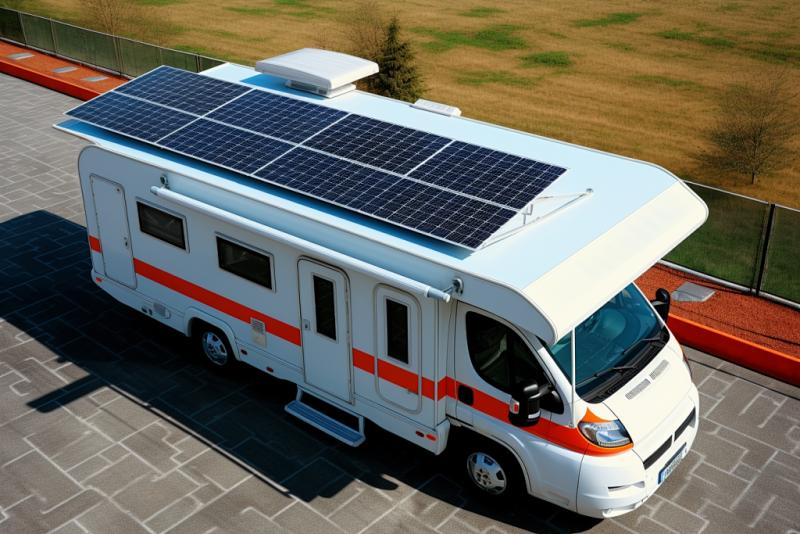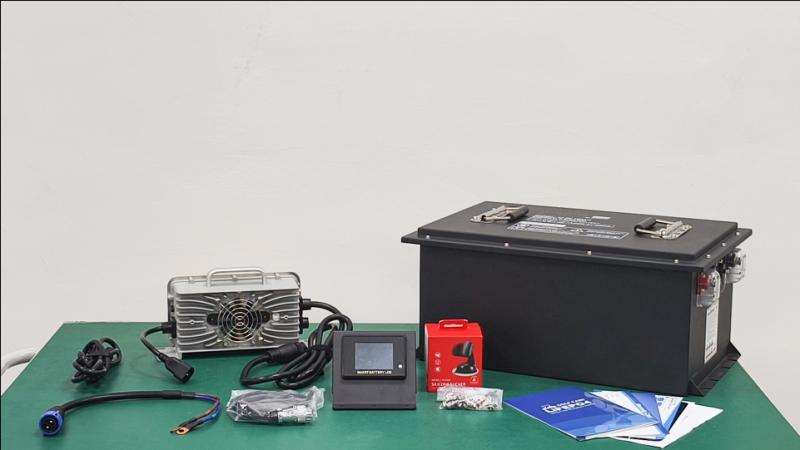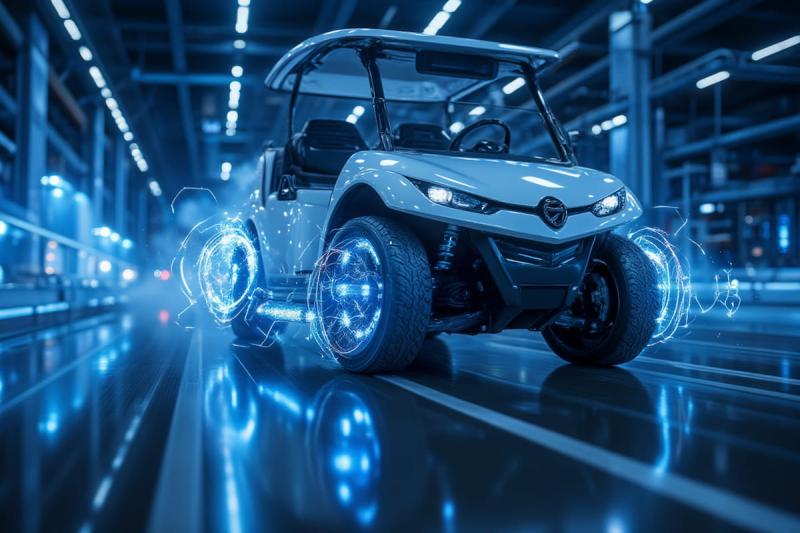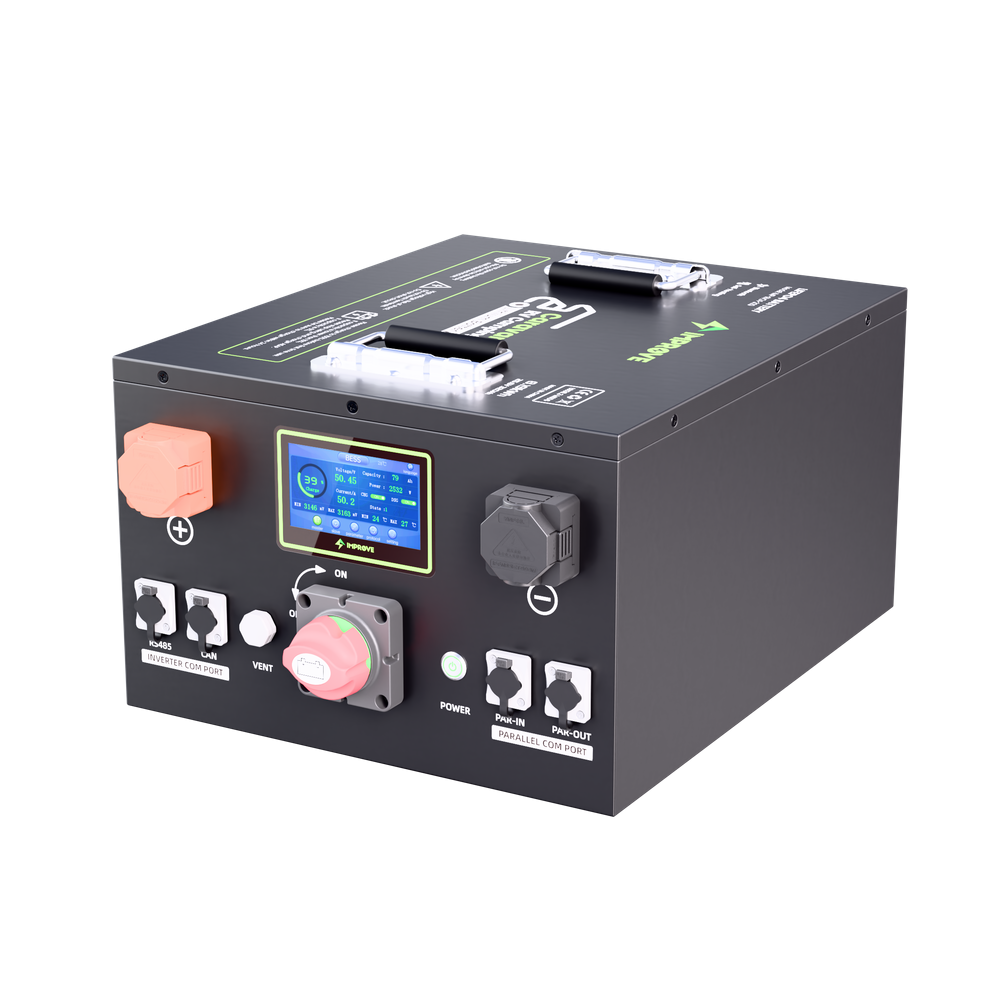When it comes to powering your RV, choosing the right battery system voltage is crucial for optimal performance and efficiency. Most RVs are equipped with a 12V power system as this is most common. However, it is becoming more common, particularly with the rise of RV solar panel systems, to consider a 24V power system.
Deciding between a 12-volt (12v) and 24-volt (24v) battery system might seem confusing at first, but understanding the differences, advantages, and drawbacks of each will guide you in making the best decision for your specific needs.
In this post, we will discuss the topic of 12v vs 24v systems to help you make an informed choice for your RV power application.
KEY TAKEAWAYS
- Choosing the right battery system voltage for your RV is crucial for optimal performance and efficiency. Understanding the differences between 12v and 24v systems can guide you in making the best decision for your specific needs.
- The choice between a 12v and 24v battery system should depend on your personal needs and specifications, taking into account factors like power draw, wiring efficiency, battery configurations, and compatibility with electrical components and appliances.
- Regular maintenance of battery terminals and connections, as well as promoting battery health and desulfation, can prolong the lifespan of your 12v or 24v battery system.
Exploring the Basics of 12v vs 24v Battery Systems
12-volt and 24-volt battery systems serve various applications depending on the power requirements and efficiency needs. 12-volt systems are far more common in RV applications as they are usually compatible with most vehicle components and sufficient for power requirements below 3000W.
On the other hand, 24v systems provide higher voltage, reducing current by half and generating less heat, which results in overall improved efficiency.
We will now examine the fundamentals of 12v and 24v battery systems and where they’re typically used.
Understanding Nominal Voltage
Nominal voltage is the standard voltage rating assigned to a battery, indicating the average output voltage the battery provides when charged. For example, the most common nominal voltage that most RVers are familiar with is the 12V battery.
Thus if your RV house battery bank has 12V batteries and all of the Direct Current (DC) power-operated appliances in your RV run off of 12V power (such as lights, fans, water pump, etc.) then you will need to provide these batteries with 12 volts.
However, it is possible to design a house battery bank built on 24V batteries instead of 12V batteries. You can do this either by purchasing one or more 24V batteries or by connecting two (2) 12V batteries together in series.
A general understanding of this aspect of a battery is important as it indirectly influences battery performance, despite not having an effect on the energy storage capacity.
RV Applications - When to Use a 12V vs 24V system
In RV applications, 12v battery systems are commonly used due to their compatibility with most vehicle components and ability to handle power requirements below 3000W. Further, to keep things simple, almost all RV appliances are designed to operate on 12 volts.
However, 24v battery systems can also be used in RVs, offering increased efficiency due to reduced resistive losses compared to 12v systems. So it is possible to transform your 12V power system to 24 volts to capture the benefits of the 24V system.
And if you would generally need more than 3000 watts or have a solar panel system generating more than 3000 watts then it may be beneficial to switch to 24 volts. This would allow you to have smaller gauge wire (thinner wire) and increase the overall efficiency of the system.
The choice between a 12v or 24v system should ultimately depend on personal needs and specifications.
Voltage Drop and Wiring Considerations
Minimizing voltage drop and maximizing wiring efficiency in battery systems are essential to ensure optimal performance and power delivery to components and appliances. Voltage drop occurs when current flows through a conductor or wire, due to the resistance of the conductor.
We will now discuss methods to decrease voltage drop and enhance wiring efficiency in 12v and 24v battery systems.
Minimizing Voltage Drop
To reduce voltage drop in battery systems, you can:
- Lower the load current and limit the power load (opt for higher voltages, such as 24V as opposed to 12V)
- Utilize voltage drop compensators, variable transformers and power line conditioners
- Choose the suitable wire size and keep the wire length short
The size and length of the wire considerably affect the voltage drop, so choosing the suitable wire size and keeping the wire length short is necessary to minimize voltage drop. This may not always be possible in larger RVs, particularly if you have a robust solar panel array where you may need long wire runs across the roof and into your RV.
Thus a 24V system has an advantage because by doubling the voltage you will decrease the current by half and as such require a smaller gauge wire.
Proper management and distribution of loads can also help mitigate the impact of voltage fluctuations on the power supply voltage.
Wiring Efficiency
Higher voltage in a 24v electrical system can enhance the efficiency of wiring, reducing resistive losses and voltage drops over longer wires, and thus allowing for more power to be transmitted over the same gauge of wire. 24V systems reduce the current (amperage) by half, thus smaller gauge (thinner) wires can be used.
On the other hand, 12v systems usually experience higher resistive losses, making them less efficient compared to 24v higher voltage systems. Considering the wiring cost, it’s important to weigh the benefits of each system before making a decision.
Power Draw and System Efficiency
Power draw and system efficiency play a vital role in battery performance, and understanding these factors in real-world scenarios can help you make the right decision when choosing between a 12v and 24v battery system.
Power draw in various applications for 12v and 24v systems can vary depending on the specific devices and their power requirements. Generally, for the same power output, a 24v system will draw half the current compared to a 12v system, resulting in lower losses and increased efficiency.
However, the exact given power draw depends on the components and load requirements of the system. In 24v systems, the reduced current allows for the use of smaller diameter wire, leading to cost savings and easier installation.
Battery Configuration: Series vs Parallel
Series and parallel battery configurations directly impact voltage and capacity, and understanding these configurations is essential when choosing between 12v and 24v battery systems.
We will now explain series and parallel battery configurations and how they impact voltage.
Series Circuit Configuration
A series circuit configuration involves connecting multiple batteries in a series, with the positive terminal of one battery connected to the negative terminal of the next battery. This configuration increases the total voltage of the batteries while maintaining the same battery capacity.
For instance, if two 12-volt batteries with 100 Ah battery capacity are connected in series, the total voltage would be 24 volts while the 100 Ah battery capacity remains the same as that of a single battery.
This is an important configuration to understand if you are considering transitioning from a 12v to a 24v system.
Parallel Configuration
When batteries are connected in parallel, the voltage of the battery system remains constant, while the capacity of the battery system is increased as the amp hour ratings of the batteries are combined. This configuration is particularly beneficial for powering devices with high energy demands.
For example, if two 12-volt batteries with 100 Ah battery capacity are connected in parallel, the total voltage would remain 12 volts while the total battery capacity would be that of the two batteries combined, or 200 Ah.
Comprehending the distinctions between series and parallel configurations can aid you in selecting the most suitable battery system for your unique needs.
The Impact on Electrical Components and Appliances
Compatibility and requirements of electrical components and appliances in 12v and 24v systems are essential factors to consider when choosing a battery system.
Most vehicle and RV components are compatible with 12v systems, as they are designed to operate on 12v power supplies. However, some larger vehicles, especially trucks, use 24v systems, and an inverter may be used to provide 12v for certain components such as radios.
Larger recreational vehicles, such as Class A motorhomes and 5th-wheel trailers, may be set up for a 24v system because this will provide more efficient power than a 12-volt system.
However, appliance requirements for 12v and 24v battery systems depend on the specific appliances and their power requirements. It is essential to ensure that the appliances are compatible with the voltage provided by the battery system to guarantee correct operation.
If the appliances in the RV require 12 volts, then you will need a DC-to-DC converter to step down the 24 volts to 12 volts in order to operate the appliances.
Thus, considering appliance requirements when selecting a battery system will guarantee superior performance and efficiency.
Solar Power Systems and Charge Controllers Compatibility
RV Solar power systems and MPPT solar charge controllers play a crucial role in the performance of 12v and 24v battery systems.
Solar panels must be compatible with the battery system’s voltage for optimal performance and efficiency. It is essential to ensure that the voltage ratings of both the solar panel and the batteries are compatible for proper system functioning.
For example, if you have a 12V power system then the solar power delivered by the charge controller must be done with the understanding that it is a 12-volt system. The same applies if you have a 24-volt system.
Further, a charge controller can only handle so much power at a certain amperage rating (such as commonly found 30 amp, 50 amp and 70 amp controllers). However, if you step up to a 24V solar panel system then you can double the wattage while keeping the amperage the same.
Thus a solar charge controller rated for 70 amps that would normally control up to 1000 watts on a 12V system will be able to control 2000 watts (double) on a 24V sytytystem. Thus you can have more solar panels AND run smaller wires if you were to opt for a 24V system.
Selecting the right charge controller for your battery system is essential for maintaining optimal performance and preventing overcharging. Factors to consider when selecting a charge controller include the battery bank voltage, solar panel input voltage, and output current.
Transitioning Between 12v and 24v Systems
Transitioning between 12v and 24v battery systems can be challenging, as it involves replacing some components, such as switches, loads, fuses and the inverter/charger, and ensuring that all components are compatible with the new voltage.
We will now discuss the steps and considerations for switching between 12v and 24v battery systems.
Upgrading to a Higher Voltage
Upgrading from a 12v to a 24v battery system involves:
- Connecting two 12-volt batteries in series to create a 24-volt battery bank
- Installing the 24v system components
- Adding a 24v to 12v converter to supply power to the existing 12v circuits at 12 volts (such as to lights, fans and other 12V appliances).
Consulting the manufacturer’s instructions and guidelines is important when performing any electrical upgrades to guarantee safety and correct installation.
Maintenance and Longevity of Battery Systems
Maintaining and prolonging the lifespan of 12v and 24v battery systems is essential for optimal performance and efficiency as it improves performance and avoids damage. Regular inspection and cleaning of battery terminals and connections help prevent corrosion and build-up.
Recognizing the importance of maintaining battery terminals and connections will guarantee the longevity and superior performance of your battery system.
NOTE: Converting to lithium RV batteries will reduce the amount of maintenance required and increase your confidence and peace of mind about your power system.
Summary
Understanding the differences between 12v and 24v battery systems and their applications is crucial when choosing the right battery system for your needs.
Factors such as voltage, power draw, wiring efficiency, battery configurations, compatibility with electrical components and appliances, solar power systems, and maintenance and longevity should all be considered when making your decision.
By taking these factors into account, you can ensure optimal performance and efficiency for your specific needs.
Frequently Asked Questions
What is 12v?
12V stands for 12 volts, which is the voltage provided by a standard car or RV battery. It is important to note that a 24V battery bank provides 24 volts instead. This increase in voltage results in a decrease in amperage (current) and allows for thinner wires.
What is the difference between 12-volt and 24-volt systems?
A 24V system will draw less current than a 12V system for the same power output, resulting in less heat generation and power wastage, making 24V systems more efficient. 24V systems bust have either a 24V battery or two batteries at 12V connected in series.
How do I choose between a 12v and 24v battery system?
When deciding between a 12v and 24v battery system, take into consideration factors such as power requirements, spatial constraints, cost, heat generation, and compatibility with electrical equipment. If you have large loads and need more than 3000 watts of power then you may want to consider a 24V system.
Can I use a 12v solar panel on a 24v battery system?
Yes, you can use a 12v solar panel with a 24v battery system. Multiple panels will need to be connected in series and parallel combinations, along with a suitable solar charge controller for effective charging.






